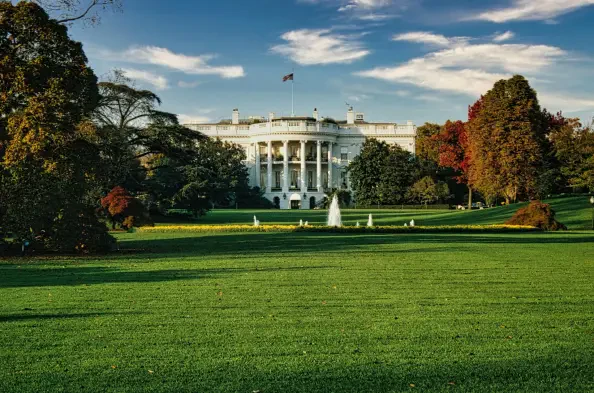In a groundbreaking move that promises to reshape America’s role in the burgeoning field of artificial intelligence, the White House has unveiled a bold new strategy for expanding AI technology on a global scale. This initiative seeks to dismantle state-imposed limitations perceived as hindrances to progress while positioning the United States at the forefront of global competition. Spearheaded by a collaborative effort between the White House and the Pentagon, this plan signifies a dramatic policy shift compared to the former restrictive approach of the Biden administration. Previously, anxiety over the potential misuse of AI by geopolitical adversaries, such as China, influenced American policy. The present administration, however, under President Trump, intends to counter these fears and leverage AI’s possibilities, emphasizing development and global dissemination over restriction.
AI Policy Evolution and Strategic Changes
At the heart of this ambitious policy is a commitment to eliminate federal AI funding for states enforcing strict AI laws, thereby encouraging a more open and innovative environment. The initiative also calls for promoting open-source AI development and facilitating American technology exports through packages managed by the Commerce Department. These efforts underscore a keen interest in growing job opportunities through AI and rejuvenating industries with AI-driven innovations that empower American workers. The strategic direction does not undermine the significance of safeguarding AI from misuse or preparing for emerging risks, despite its principal focus on AI expansion. Trump’s January directive underscored the necessity of an American-led AI world leadership strategy. This aligns with sentiments from David Sacks, the White House’s AI and crypto czar, who minimized fears of AI technology inadvertently reaching adversarial entities.
The stark policy divergence from Biden’s tenure, which focused on consumer protection and checked AI chip exports to mitigate national security threats, reflects a broader realignment in U.S. AI policy. The pivot toward aggressive market expansion marks a significant departure, as the government leans more on embracing AI’s potential, particularly in defense through Pentagon collaborations. While previous strategies were more defensively inclined, the current shift emphasizes growth, market expansion, and tackling regulatory hurdles. Through this new lens, the U.S. aims to maintain its competitive edge in an ever-advancing global technological landscape.
Military Implications and Technological Collaboration
In addition to its economic implications, the strategy’s implementation holds considerable military significance, with the Pentagon actively involved in AI-related projects. The military’s involvement aims to enhance defense capabilities by integrating AI into various operational areas, such as intelligence analysis, logistics, and autonomous systems. By doing so, the United States aims to maintain superiority on the technological front while fulfilling its security and defense objectives. The approach reflects a broader commitment to innovation and adaptation in military operations, ensuring American forces remain well-equipped amid evolving global challenges.
Technological collaboration plays a vital role in this new strategy. The White House plans to work closely with tech companies, researchers, and international allies to pool resources and knowledge, fostering an environment conducive to AI advancements. Such collaborations are expected to yield mutually beneficial outcomes in developing and implementing cutting-edge AI technologies. The administration is keenly aware of the potential economic and societal benefits of these partnerships, as they facilitate job growth and drive forward technological innovation across multiple sectors.
The Road Ahead for American AI Leadership
This new AI expansion strategy also encompasses a forward-thinking approach to the ethical use and governance of artificial intelligence. Recognizing the importance of responsible AI development, the plan emphasizes initiatives to establish robust ethical standards, ensuring AI technologies are designed to align with human values. This includes addressing issues such as bias, fairness, transparency, and accountability within AI systems. By establishing such frameworks, policymakers aim to build public trust in AI technologies while mitigating potential ethical concerns and fostering a secure and equitable AI-driven future for all.
The policy’s comprehensive scope reflects a keen understanding of the multi-dimensional nature of AI technology, as it seeks not only to capitalize on economic opportunities but also to safeguard against potential risks. By adopting a holistic approach that weaves together ethical considerations, global competitiveness, and military applications, the United States sets a precedent for other nations to follow. The strategy underscores the critical importance of balancing innovation with responsibility, ensuring AI’s powerful capabilities are harnessed for the global good.
Charting a Path Forward
Central to this bold policy is the determination to cut federal AI funding for states imposing strict AI laws, aiming to foster a more open and innovative environment. The plan includes advocating for open-source AI development and boosting American tech exports through channels overseen by the Commerce Department. These moves reflect a strong commitment to expanding job opportunities and reviving industries using AI-driven innovations to empower the American workforce. While the primary focus is on AI growth, the policy also acknowledges the importance of safeguarding against AI misuse and preparing for future risks. Trump’s January directive emphasized the need for America to lead globally in AI, resonating with sentiments from David Sacks, the White House’s AI and crypto czar, who downplayed fears of AI reaching adversaries. The notable policy shift from Biden’s era concentrated on consumer protection and controlling AI chip exports for national security. The current focus on aggressive market expansion marks a strategic shift, aiming for the U.S. to retain its competitive edge in technology.






